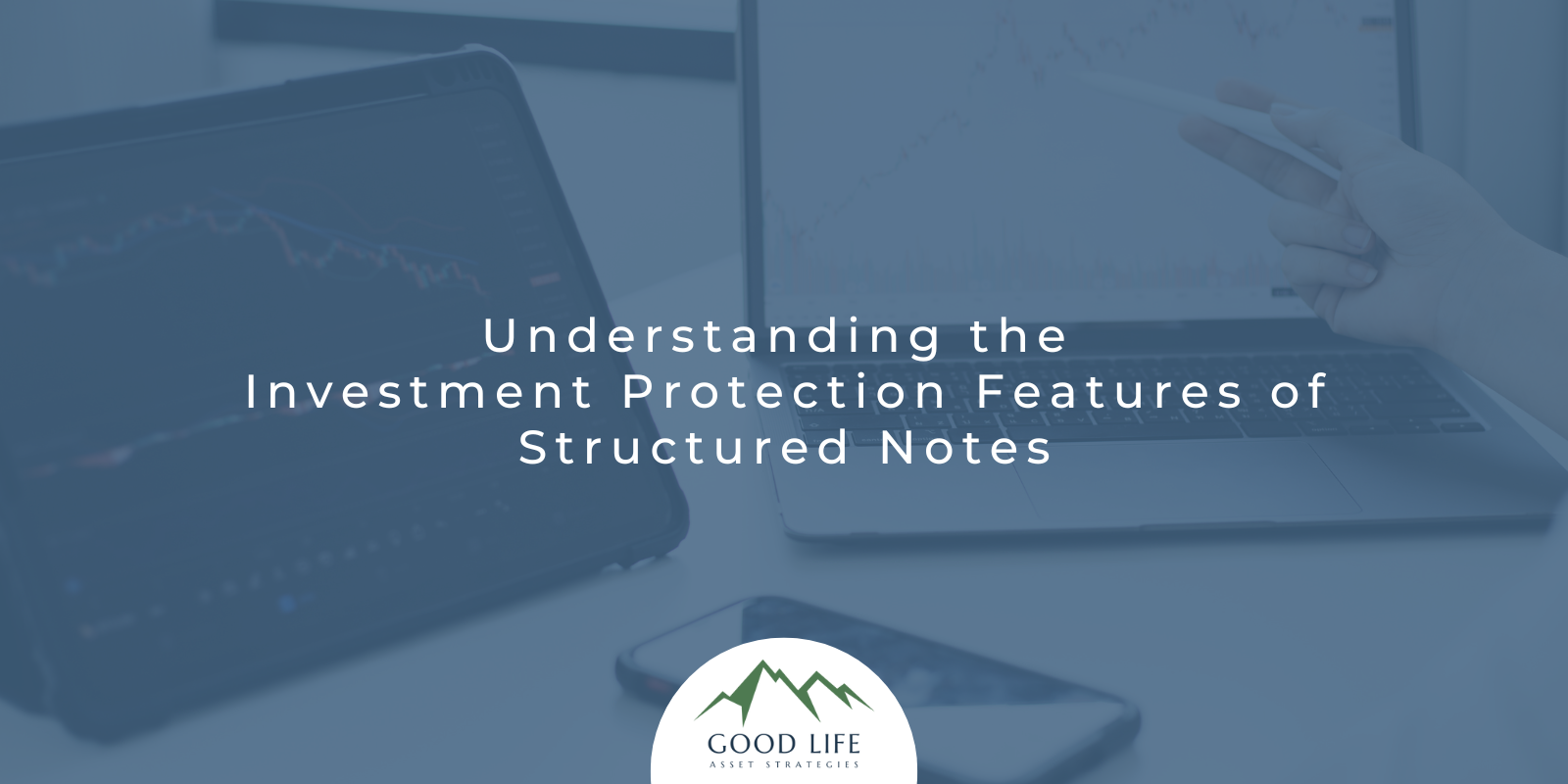- 817-864-8560
- justin@g-las.com
- Mon - Fri: 9:00am - 5:00pm

Structured notes come in two different forms—growth or income. One thing that is common throughout structured notes is the principal or coupon payment investment protection features. Although there are variations with each note, they will typically use one of three protection features. These features can help investors protect some of their investments during down or volatile market cycles.
As always, structured notes have a stated trade date and maturity date. They will end at maturity unless they are “called” early (to be discussed later). The principal protection features (and the notes themselves) are backed by the full faith and credit of the issuer. Make sure you understand any investment fully before investing in it and if you invest in a structured note, make sure it matches your risk profile and financial goals.
If you have any questions regarding structured notes, feel free to reach out to us.
The views expressed represent the opinion of Good Life Asset Strategies, LLC. The views are subject to change and are not intended as a forecast or guarantee of future results. This material is for informational purposes only. It does not constitute investment advice and is not intended as an endorsement of any specific investment. Stated information is derived from proprietary and nonproprietary sources that have not been independently verified for accuracy or completeness.
Good Life Asset Strategies, LLC is a registered investment advisor located in Fort Worth, Texas. Good Life Asset Strategies, LLC and its representatives are in compliance with the current registration and notice filing requirements imposed upon registered investment advisors by those states within which the firm maintains clients.
All information herein has been prepared solely for informational purposes, and it is not an offer to buy or sell, or a solicitation of an offer to buy or sell any security or instrument or to participate in any particular trading strategy. Such an offer can only be made in the states that Good Life Asset Strategies, LLC is either registered or a notice filer or an exemption from registration is available under the securities laws or other laws.
Certified Financial Planner Board of Standards, Inc. (CFP Board) owns the CFP® certification mark, the CERTIFIED FINANCIAL PLANNER™ certification mark, and the CFP® certification mark (with plaque design) logo in the United States, which it authorizes use of by individuals who successfully complete CFP Board’s initial and ongoing certification requirements.